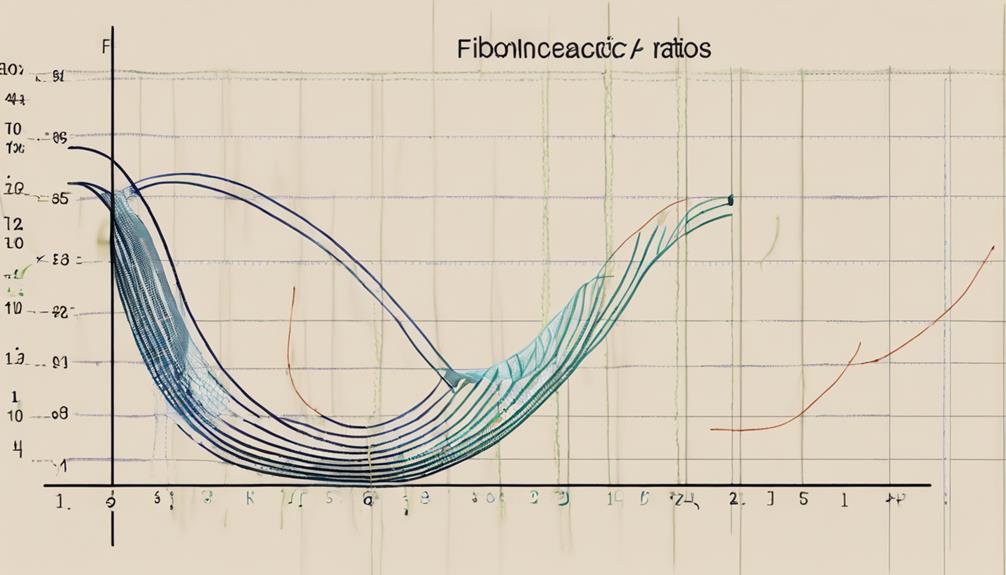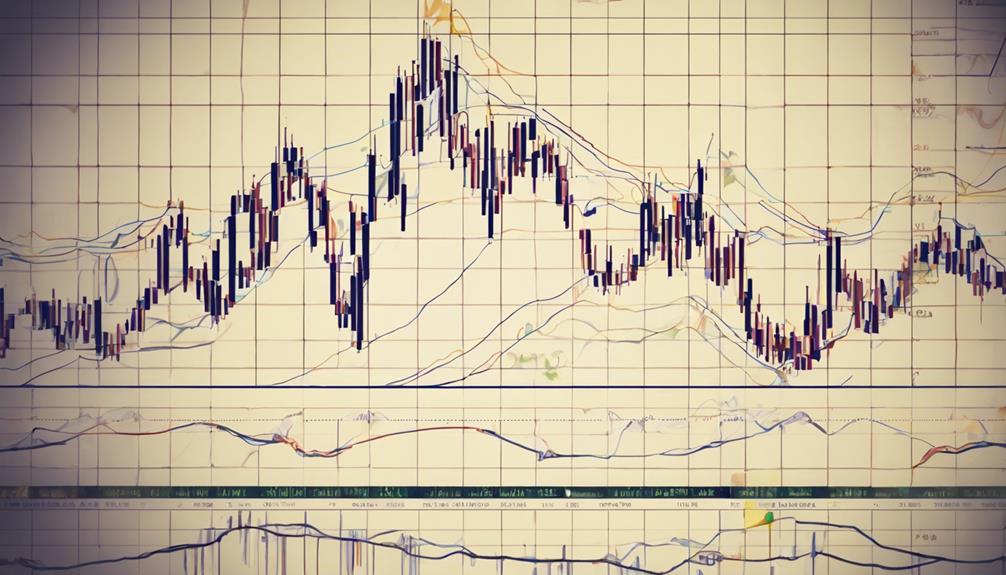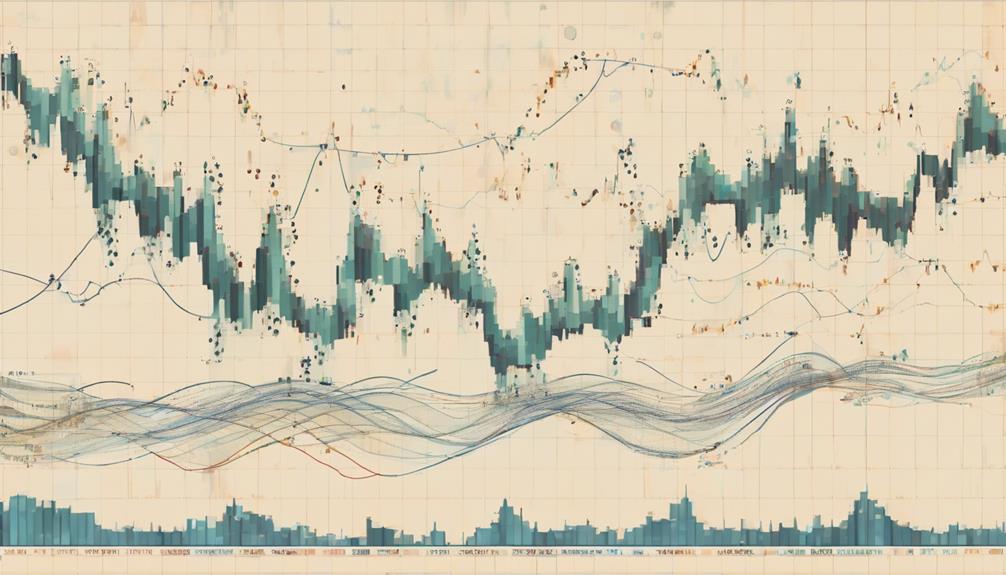Exploring the advanced principles of Elliott Wave Theory opens a window into a realm of intricate wave patterns and market dynamics that underpin the theory's foundation. These principles go beyond the surface-level understanding of waves, diving deep into the complexities of wave degrees, patterns, and Fibonacci ratios.
By unlocking these advanced concepts, traders gain a nuanced perspective on market psychology and potential price movements. The application of technical indicators further refines the analysis, offering a more precise lens through which to view market behavior.
As the discussion unfolds, the significance of these advanced principles in shaping trading strategies and decision-making processes becomes increasingly evident.
Elliott Wave Theory Overview
How does Elliott Wave Theory, developed by Ralph Nelson Elliott in the 1930s, provide a structured framework for predicting stock market movements through wave patterns based on Dow Theory and the fractal nature of market action?
Elliott Wave Theory is a technical analysis approach that categorizes market trends into impulse waves and corrective waves, forming a 5-3 wave pattern. Impulse waves (denoted as 1, 3, 5) represent the directional movement of the market, while corrective waves (2, 4) depict the market's retracement.
By incorporating Fibonacci ratios, Elliott Wave Theory enhances market analysis by identifying potential reversal levels and projecting price targets within wave structures. The theory's emphasis on wave degrees, ranging from Grand Supercycle to Subminuette, aids in identifying the hierarchical position of waves within the market trend.
This structured approach, coupled with the use of technical indicators and Fibonacci sequence, provides traders and analysts with a comprehensive methodology to analyze and forecast market movements with a high degree of precision.
Wave Patterns and Structures

Within Elliott Wave Theory, the analysis of wave patterns and structures serves as a fundamental component in identifying market trends and potential trading opportunities.
The theory distinguishes between impulse waves, which move in the direction of the primary trend (labeled as waves 1, 3, 5), and corrective waves, which move against the primary trend (labeled as waves 2, 4), all within a 5-3 wave structure.
Corrective patterns such as flats, triangles, and flags are crucial in pinpointing potential trend reversals and establishing key levels for risk management.
The eight waves in Elliott Wave Theory, numbered 1 to 5 and labeled a, b, c, represent specific phases in market trends, enabling practitioners to assess market cycles effectively.
Understanding these wave structures and patterns is essential for applying Elliott Wave Theory proficiently, aiding in the prediction of market movements and the identification of favorable trading opportunities.
Fibonacci Ratios in Elliott Wave

Fibonacci ratios play a critical role in Elliott Wave analysis by pinpointing potential reversal and extension points within wave patterns. These ratios, derived from Fibonacci numbers like 0.618 and 1.618, are instrumental in setting profit targets and identifying where corrective waves might end within the broader trend.
By using Fibonacci retracement levels, traders can anticipate the termination of corrective waves and the initiation of the subsequent impulse wave. The integration of Fibonacci ratios into Elliott Wave theory enhances the precision of wave analysis, aiding in the prediction of future price movements.
Understanding these ratios allows traders to make better-informed decisions, as they provide valuable insights into market dynamics. By applying Fibonacci ratios effectively, traders can improve their overall trading strategies and increase the likelihood of successful trades.
Advanced Trading Strategies

Building upon the foundation of Elliott Wave theory, advanced traders employ sophisticated strategies that leverage intricate wave structures and market analysis techniques to maximize trading opportunities and manage risk effectively. By utilizing Fibonacci ratios, these traders can pinpoint precise entry and exit points, enhancing their ability to capitalize on market movements. Complex wave counts are applied to analyze market structures, enabling them to forecast potential price movements with greater accuracy.
Incorporating Elliott Wave rules and guidelines further refines their trading strategies and risk management practices. Advanced practitioners delve into wave personalities and structures to gain deeper insights into market dynamics, allowing them to adapt their approaches to changing market conditions. Through the development of sophisticated trading systems rooted in Elliott Wave principles, these traders are better equipped to navigate the complexities of the financial markets and achieve consistent success in their trading endeavors.
Practical Applications in Markets

Utilizing Elliott Wave Theory in practical market applications involves a systematic approach to identifying and forecasting wave patterns for anticipating future price movements. Traders rely on Elliott Wave analysis to determine entry and exit points by conducting thorough wave counts and recognizing specific wave patterns.
A key aspect of practical applications is the utilization of Fibonacci ratios to establish profit targets within the framework of Elliott Wave structures. Additionally, advanced principles emphasize the importance of understanding wave degrees and wave personalities to enhance market analysis.
How Do the Advanced Principles of Elliott Wave Theory Tie into the Importance of Corrections?
Understanding the principles of Elliott Wave Theory is crucial for investors who wish to navigate the financial markets successfully. The significance of elliott wave corrections importance lies in their ability to provide insight into potential market trend reversals and entry points for profitable trades. Corrections are an integral part of the Elliott Wave Theory and play a key role in determining the overall market direction.
Frequently Asked Questions
What Is the New Elliott Wave Principle?
The New Elliott Wave Principle represents an extension of the traditional 5-3 wave pattern, introducing a 5-3-5 wave structure. It enhances market analysis by incorporating additional wave counts and patterns for more precise trend identification in trading.
What Is the Logic Behind Elliott Wave Theory?
Elliott Wave Theory's logic lies in understanding market movements through repetitive wave patterns driven by investor psychology. It discerns trends with 5-wave impulses and 3-wave corrections, enabling traders to forecast price actions and make informed decisions.
What Are the Options of Elliott Wave Theory?
Elliott Wave Theory offers traders various options for analyzing market trends by identifying wave patterns. Understanding these options helps anticipate trend reversals and corrections, leading to informed decision-making and improved technical analysis skills.
What Are the Tenets of the Elliott Wave Theory?
Elliott Wave Theory, a technical analysis approach, comprises 8 waves classified into impulse and corrective waves. Each wave contains a 5-3 wave count, emphasizing market movements. Waves are categorized into degrees, aligning with Fibonacci numbers for predicting market trends.
Conclusion
In conclusion, the advanced principles of Elliott Wave Theory offer a comprehensive framework for analyzing market dynamics.
By studying wave patterns, Fibonacci ratios, and utilizing technical indicators, traders can gain insights into market psychology and make informed trading decisions.
These advanced strategies provide a structured approach to understanding trend formation and potential price movements, enhancing the precision of market analysis and forecasting.


